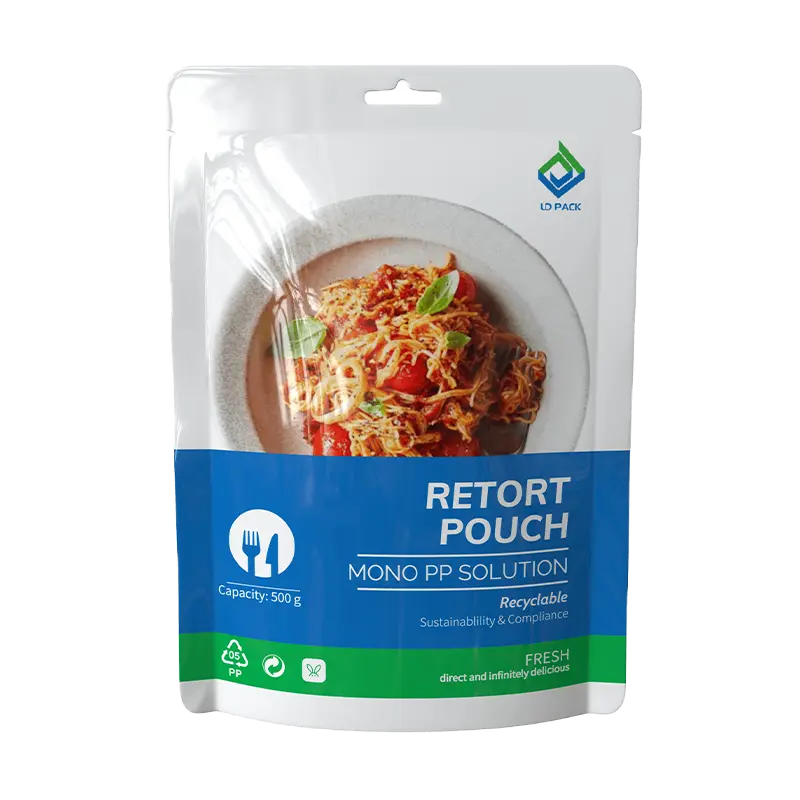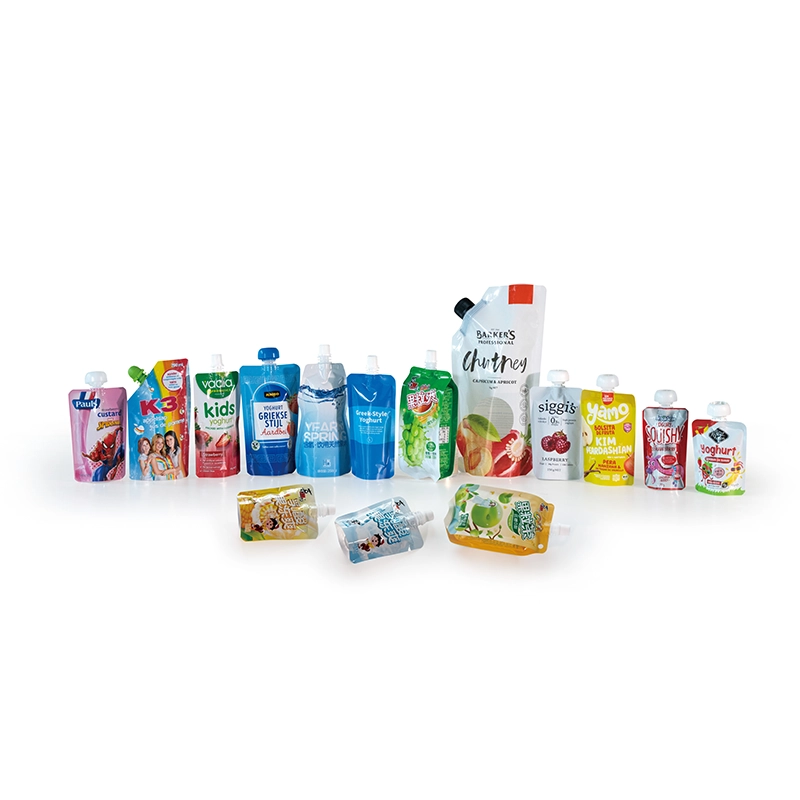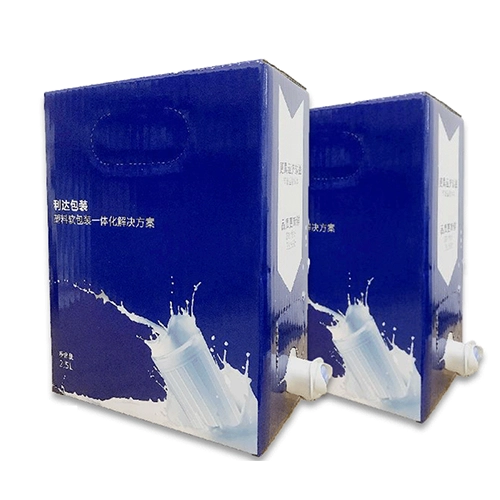Key Indicators of the Category and Filling Process about Pre-made Pouch
Currently, major brands and customers in the market usually use pre-made pouches for automatic filling of their products. Depending on the contents, different filling methods are chosen. Rotary and linear filling machines are the two common types of equipment. The filling process typically involves: automatic pouch feeding - opening the pouch - filling the contents - sealing - subsequent processing. After automatic weighing or hydraulic measurement, the contents are filled into pre-made pouches. Some products require additional processes such as sterilization and labeling before completing the entire packaging process. Multi-station filling equipment significantly enhances efficiency, with the same machine now accommodating 4 to 6 bags simultaneously, leading to a substantial increase in productivity.
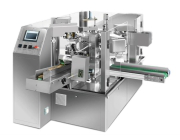
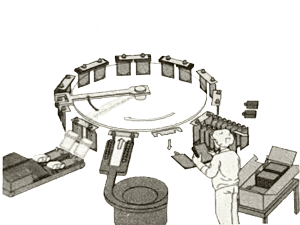

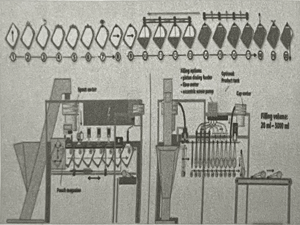
For LIQUID PACKAGING, we provide flexible filling solutions. Juice products are filled through spout into the pouches, whereas sauce products are filled from the bag mouth into the stand-up pouches. We cater to personalized customer needs, offering options to purchase packaging and spout separately. For special products, innovative filling methods are employed, such as using a large-diameter spout opening to enhance filling efficiency while ensuring consumer convenience.
In terms of production technology, we pay meticulous attention to details. We ensure the stability of pouch size
and maintain appropriate friction coefficients. Our packaging designs consider filling pressure, heat-sealing strength, and impact resistance to withstand various liquid pressures. Moreover, our low-temperature sealing technology is pollution-resistant and particularly suitable for high-speed filling machines. Additionally, our products feature auxiliary functions like inkjet coding and sterilization, ensuring the efficiency and smoothness of the entire filling process.
Different internal contents have varying requirements for filling machines and packaging pouches. For instance, the filling speed and method for liquid packaging, such as juice beverages and sauces, differ significantly due to variations in internal cylinder specifications and extrusion measurement equipment. Juice products generally use spout pouches and are filled through spout, while sauce products typically use ordinary stand-up pouches and are filled from the bag mouth. Some sauce products may use spout pouches with large diameters to ensure smooth filling.
Usually, spout pouches are delivered to customers by flexible packaging manufacturers. However, the space occupied by the empty pouches after welding the spout is significant, leading to high transportation and storage costs. Consequently, some customers adopt the approach of purchasing packaging and spout separately, welding the spout onto the pouches on their filling lines. For special products like high-viscosity yogurt, customers may fill the pouches through the bag mouths first, followed by online welding of the spout. This method enhances filling efficiency, and the added spouts facilitate easy consumption by consumers.
Both the performance of filling equipment and packaging pouches affect the filling process. At each step of the filling process (automatic bag feeding, opening the bag mouth, filling the contents, sealing, and subsequent processing), specific requirements are imposed on the packaging pouches.
During automatic bag feeding, pouches must have stable dimensions and good flatness. The friction coefficient between pouches should be stable (typically within the range of 0.15-0.25) to prevent issues such as uneven bag suction or slipping, or failure to attach the bags. The ability of pouches to open their mouths smoothly before filling is a crucial factor. Pouches need to have good opening performance, enabling the machine's suction cups to smoothly open the bag mouth. Apart from the bag mouth, whether the bottom of the pouch can open under normal filling pressure also affects the smoothness of filling. Especially for stand-up pouches, difficulty in opening the bottom of the pouch is a common problem. Some filling machines are equipped with additional suction cups to open the bottoms of pouches.
Filling processes involve specific filling pressures. The heat-sealing strength and impact resistance of pouches must withstand the impact pressure of filling liquids. Therefore, appropriate materials need to be selected based on the actual situation of filling and contents to ensure the pouches' strength.
The sealing performance of pouches is also a key factor affecting the filling process. Hence, pouches must have low-temperature sealing ability and resistance to contamination. This requirement is particularly stringent for high-speed filling machines, where sealing time is short, requiring higher heat-sealing performance of the pouches.
Additionally, auxiliary processes during filling, such as coding and sterilization, require the pouches' surfaces to be conducive to smooth inkjet printing and coding. After sterilization, the pouches must have good flatness and heat resistance to meet customer requirements.
For automatic packaging equipment using rolls, such as packaging potato chips, inert gas needs to be filled into the pouches during the packing process to replace the air (oxygen) in the pouches. This prevents the oil-containing components of potato chips from being crushed and oxidized. Such gas-filled packaging requires the sealing layer material to have excellent heat-adhesive strength.
About LD PACK
LD PACK is dedicated to providing customers with the finest printing solutions in the field of flexible packaging. Our professional team and advanced equipment ensure that your products stand out in the market, earning the trust and satisfaction of your customers.



